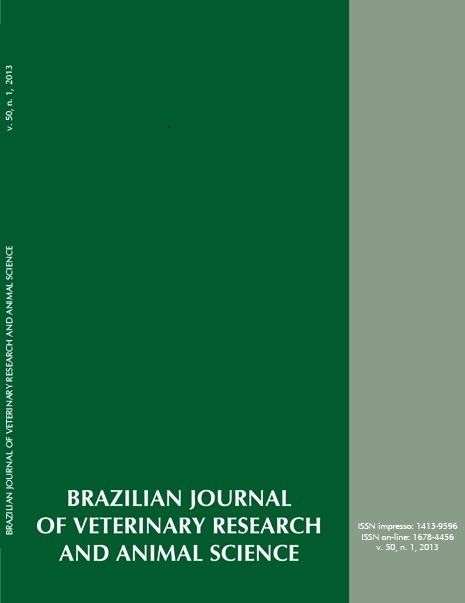Craniometric measurements in dogs (Canis familiaris). Features in the mesaticephalic skulls
DOI:
https://doi.org/10.11606/issn.2318-3659.v50i1p5-11Keywords:
Craniometric measurements, Dogs, Mesaticephalic skullAbstract
In this study, a total of 25 skulls of the adult, mongrel and mesaticephalics dogs were used. Craniometric measurements for different parts of the skull were made. Cephalic indices and ratios were calculated. Certain points and landmarks on the skull are recognized in making linear measurements and are inion, bregma, nasion, prosthion, pogonion, basion, euryon, and zygion. Skull height (41,92 mm ± 3,9), skull length (177,72 mm ± 16,22), neurocranium (96,84 mm ± 7,25), viscerocranial (79,24 mm ± 8,72), basal length (140,24 mm ± 12,21), condylobasal (149,32 mm ± 12,21), snout (69,84 mm ± 7,07), nasals (50,08 mm ± 6,77), mandibular (129,88 mm ± 16,3), and of palatal (76,84 mm ± 7,01); width of neurocranium (62,24 mm ± 3,8), and zygomatic (95,44 mm ± 7,85) were obtained. Therefore, were calculated cranial index (53,83 mm ± 3,36), neurocranium (64,48 mm ± 4,69), facial (121,06 mm ± 9,18), basal (44,64 mm ± 4,17), width of the jugular processes (41 mm ± 4,2), of occipital condyles (35,48 mm ± 3,21), and of the foramen magnum (17,48 mm ± 2,27); height of the occipital triangle (38,28 mm ± 3,35), of the foramen magnum (14,36 mm ± 1,07); length of the dorsal notch (16,1 mm ± 1,12), and foramen magnum index (83,71 mm ± 14,44). Although with some differences in measurements, no significant difference was observed between the dimensions and reported to mesaticephalic skulls.Downloads
Download data is not yet available.
Downloads
Published
2013-02-22
Issue
Section
UNDEFINIED
License
The journal content is authorized under the Creative Commons BY-NC-SA license (summary of the license: https://
How to Cite
1.
Schimming BC, Pinto e Silva JR de C. Craniometric measurements in dogs (Canis familiaris). Features in the mesaticephalic skulls. Braz. J. Vet. Res. Anim. Sci. [Internet]. 2013 Feb. 22 [cited 2024 Jul. 26];50(1):5-11. Available from: https://www.revistas.usp.br/bjvras/article/view/55818





